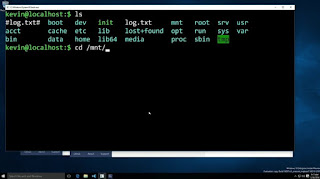Women in cybersecurity: the change is coming, slowly but steadily - "TechnoTron"
Not only companies with a more diverse workforce offers a playing field more obvious to the new recruits; there were studies that found that the places of work various are more profitable, productive and have higher levels of customer satisfaction.
These findings make the picture even more worrying for the industry of information security, in that only 11% of jobs in cybersecurity at the global level are occupied by women.
In an industry that is also facing a recruitment crisis (40,000 of the 128.000 positions that open annually in the united States remain vacant), it is evident that much remains to be done to address the gender gap in the cybersecurity and increase the levels of recruitment of the industry in general.
CYBERSECURITY, WOMEN, WORKS
A problem of image
Despite being, by definition, a modern industry and a vision for the future, the professions related to the safety and security continue to be dominated by men. And, as noted in the report of the Center for Cyber Security and Education, (ISC) on women in cyber security, it is expected that the gap in labour to reach 1.8 million people by 2022.

This is not a small problem, as he said in 2015 Lysa Myers, a researcher of security in ESET. Talking to WeLiveSecurity, expressed his concern that “there are still a handful women in the industry”, a fact that is partly attributed to an image problem within the technical industry.
“I think there is a stereotype, unfortunate about the technical jobs in which people spend day and night in a dark cellar,” he said. “But that is not the reality at all.”
Another of the reasons behind the gender gap and recruitment in general is the lack of understanding about the different roles covered by the umbrella of it security.
The possible careers and professions for men and women, are not always clear, nor are they known by all; few places offer an education in depth about computer to the students before the university, although the percentage of people who need to use computers in a competent manner is quickly approaching the 100%.
“But if not to be seen as a possible way for the children that show interest, we will lose the possibility of having your talent and may end up choosing careers more ‘traditional’ only because they knew they couldn't continue this way,” said Camilo Gutierrez, head of research at ESET Latin america, to analyze the need for reinventing education.
"THERE IS A STEREOTYPE, UNFORTUNATE ABOUT THE TECHNICAL WORK"
In search of balance
Fortunately, they have created several organizations and initiatives with the goal of achieving the balance. One of these initiatives is the Women in Cybersecurity Scholarship, a scholarship of $ 2,500 that ESET is awarded to women pursuing undergraduate studies and aspire to a career in cyber security in the united States.
“THE AWARD WAS INCREDIBLY USEFUL; IT VALIDATED MY CHOICE OF CAREER”
The winner of the last year, Chelsie Power, now works as an analyst of information security, in addition to studying for his Master's degree in Cybersecurity at Cal State University, San Marcos.
She said: “The award was incredibly useful as it paid for my books, materials, additional training, and some of the tuition expenses. Validated my career choice, giving me the confidence to continue developing my skills as an analyst of information security”.
And he added: “I Think that any field benefits of a diverse workforce to take advantage of broader perspectives, especially cyber security, where cyber threats and vectors of attack are becoming more sophisticated and creative”.
Other organisations which seek to restructure the balance and improve rates of recruitment include the National Center for Women in Information Technology, with headquarters in the united States, and Girls Who Code, which aims to educate and inspire girls in high school to make careers in computing.
While the general perception indicates that those who wish to pursue a career in cybersecurity need to have a background in technology, this is not necessarily the case; the own Lysa Myers began her career as a florist, became a receptionist and then began to gain experience in the laboratory of virus research of the company where he worked.
A report of 2015 written by Myers called Women in Federal Cybersecurity also revealed that several experts recognized in cybersecurity began their careers in various fields. Nothing is impossible.
What a sign of change?
"MORE PEOPLE ARE REALIZING HOW SOLID, SAFE, AND INTERESTING THAT THERE IS THIS RACE"
Although the percentage of women in work of cyber security is still low, there are some indications that the interest in cybersecurity as a career is starting to increase.
The Cyber Boot Camp of ESET, a program in which San Diego students receive five days of intense education in the art of defending computer systems, had an increase of female participation from 0% to 40% in three years.
Myers also believes that the interest in the sector is growing. Speaking in 2015, said: “More people are realizing how solid, secure and interesting that it is this career choice, and as more and more companies are realizing how crucial it is to computer security, there are many types of people dealing with many different aspects of the technology.”
CYBERSECURITY, WOMEN, WORKS

Comments
Post a Comment